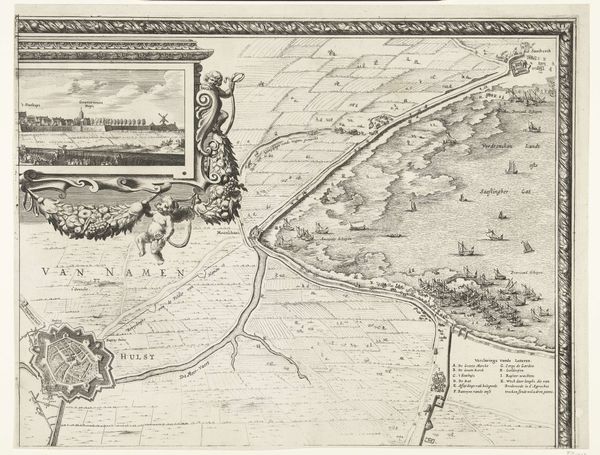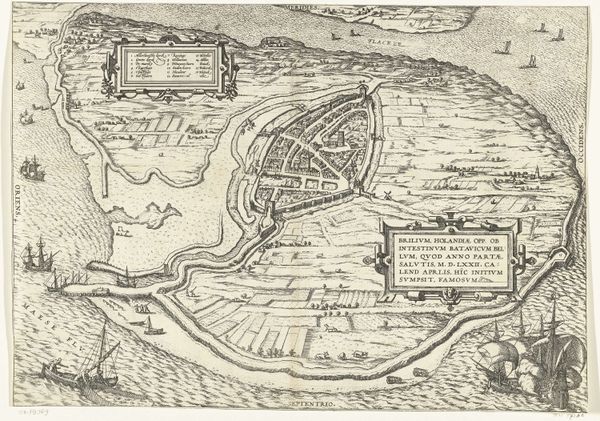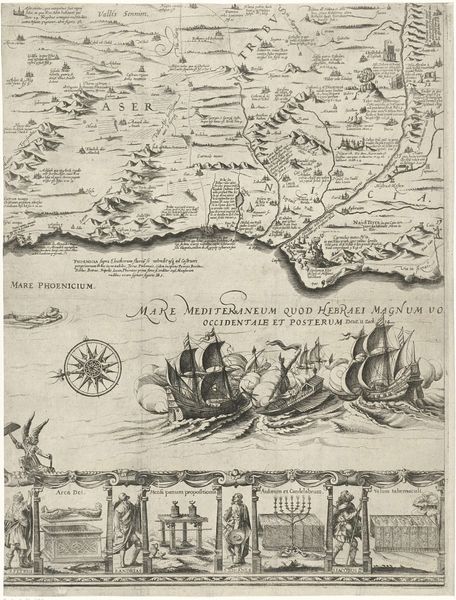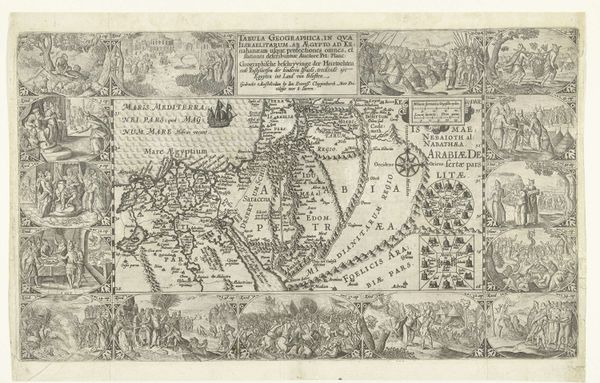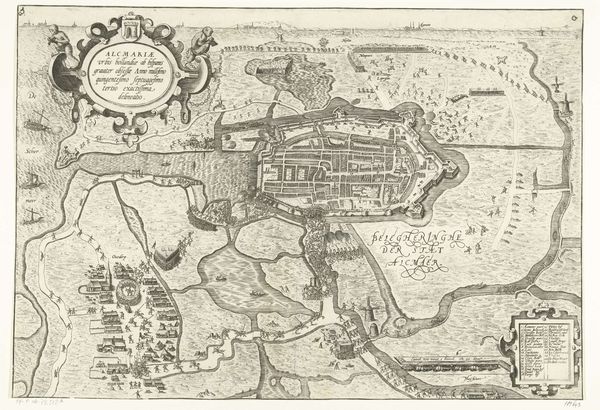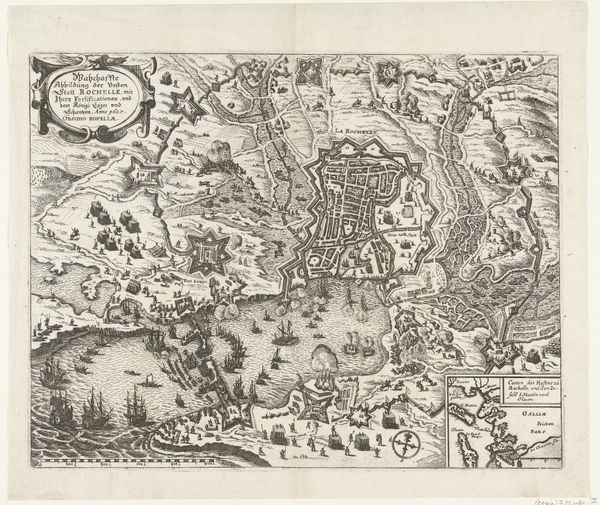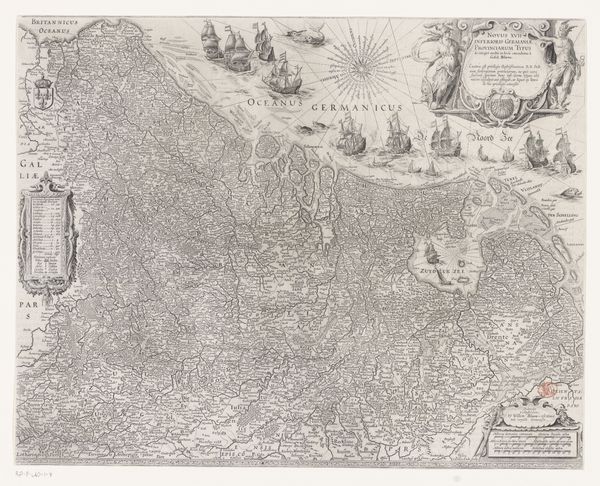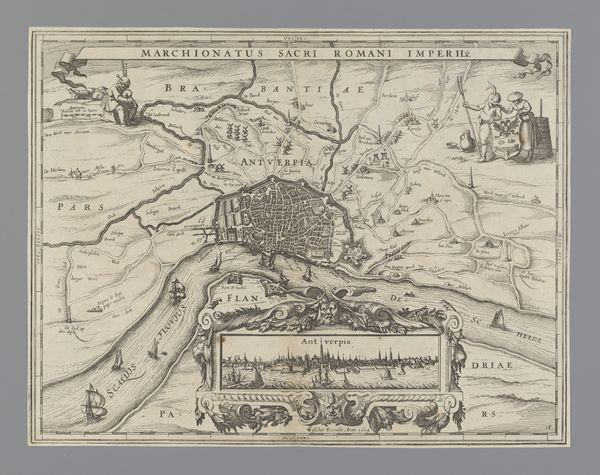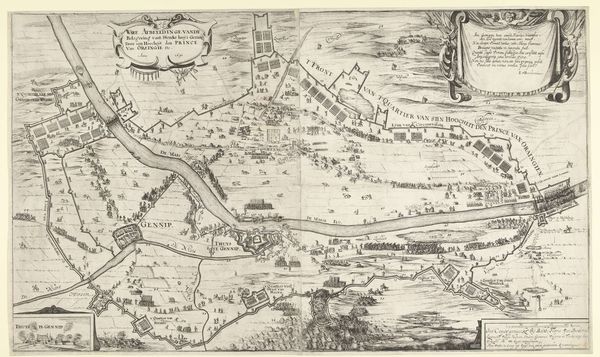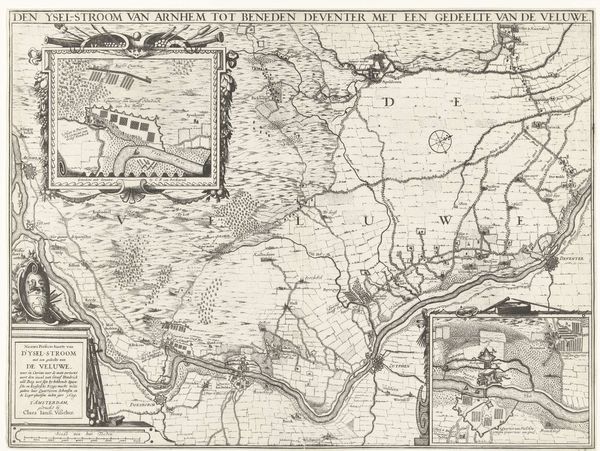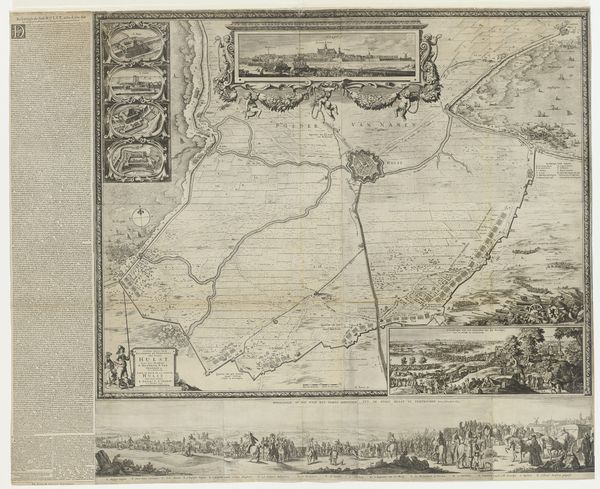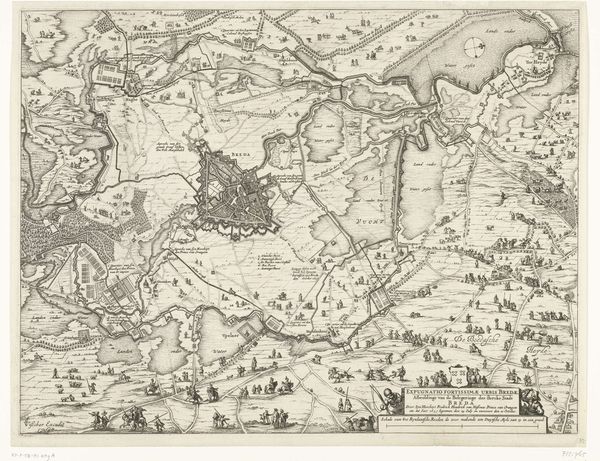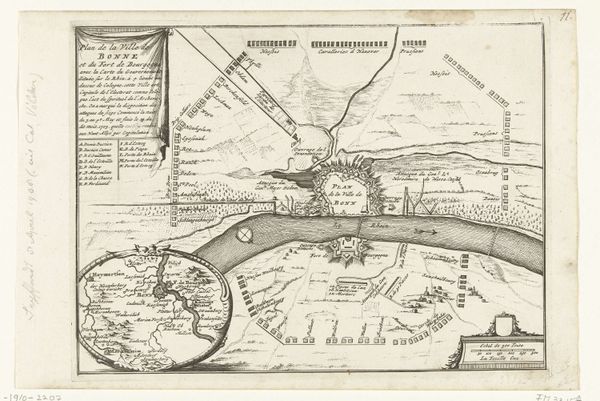
Beleg en verovering van Hulst door Frederik Hendrik (blad linksboven), 1645 1646
0:00
0:00
print, engraving
# print
#
cityscape
#
history-painting
#
engraving
Dimensions: height 415 mm, width 540 mm
Copyright: Rijks Museum: Open Domain
Curator: Let’s take a look at "Beleg en verovering van Hulst door Frederik Hendrik," an engraving by Abraham Dircksz. Santvoort dating from 1646, documenting the siege of Hulst. The artwork meticulously illustrates the military strategies involved in capturing the city. Editor: It is an incredibly detailed scene; a map teeming with strategic military information presented amid flourishes of almost celebratory ornamentation. The cherubic figures almost feel ironic given the depicted subject of the violent capture of a city. Curator: Indeed. As a historical record, the piece is fascinating. Hulst was of significant strategic importance in the Dutch Republic’s conflict with Spain. These visual representations of military campaigns served to reinforce the power and authority of the Dutch leadership. They also underscore the tension between detailed accuracy and ideological promotion. Editor: Right, maps like this are not just neutral records. They're statements of power, designed to impress upon viewers the strength of the Dutch military and the legitimacy of their claims. And, by extension, we have to recognize how such depictions effectively erased the experiences of the people of Hulst who experienced that conflict firsthand. Curator: Certainly, it is interesting how the city and the siege are idealized. Look how even the surrounding landscape seems neatly ordered. What stories do these kinds of "total" depictions tend to suppress? Editor: Precisely. The engraving also underscores the role that landscape plays in these events. These controlled landscapes often have darker connections with contemporary systems that involve marginalization of marginalized communities in the name of resources and "control." These patterns keep being rewritten in different historical and geographical scenarios. Curator: Food for thought. I have never considered the connection to present conditions in those terms. Editor: Visual rhetoric often obscures reality through simplification. It invites a critical analysis to unpack it. Curator: Thanks, it’s an interesting lens through which to re-evaluate how we look at works like this. Editor: No problem, thank you. This piece has given us the chance to reflect how "histories" depicted through artwork function not only as documentary records, but active players in the ongoing shaping of how people negotiate the idea of identity and conflict.
Comments
No comments
Be the first to comment and join the conversation on the ultimate creative platform.
